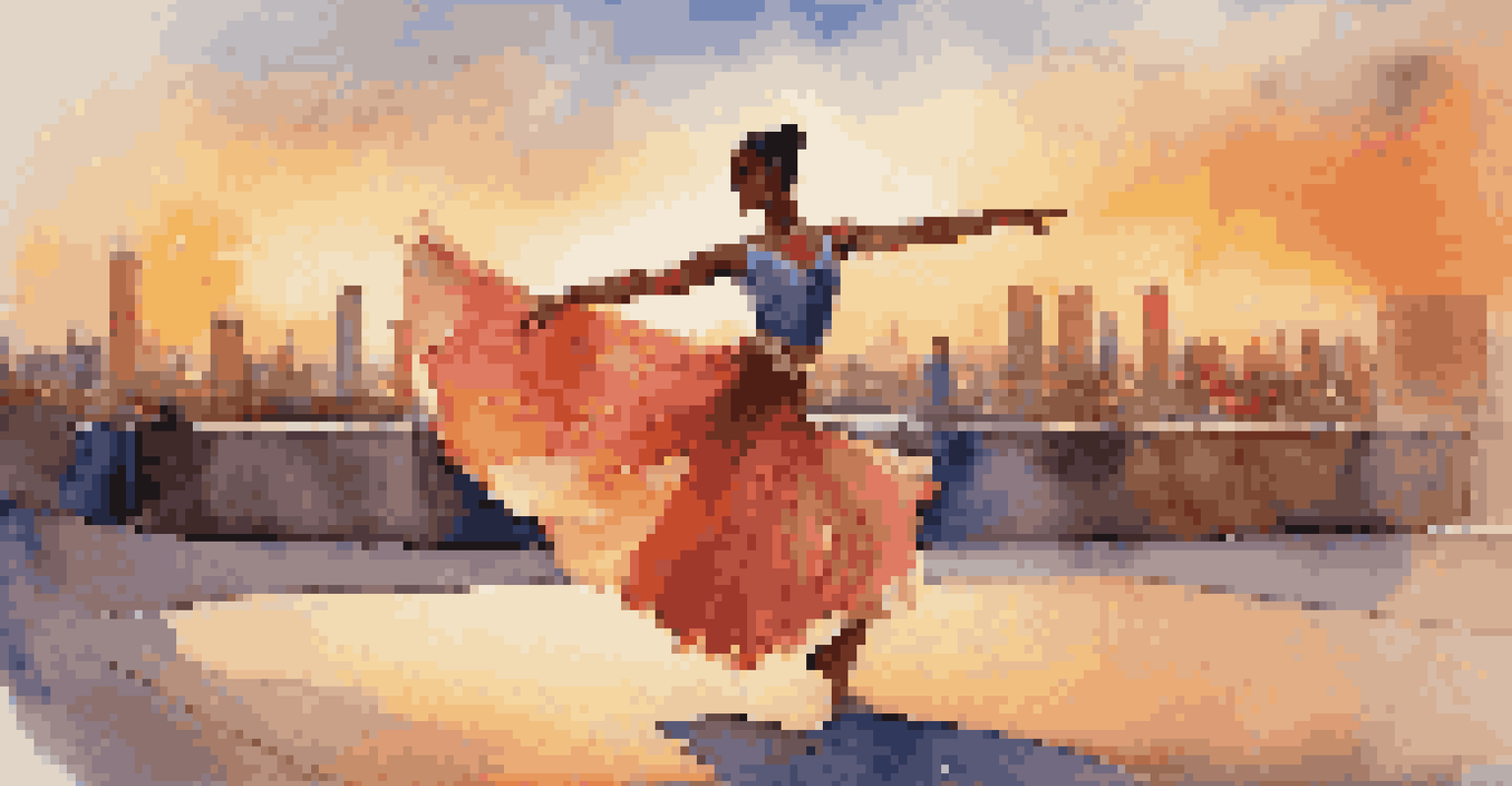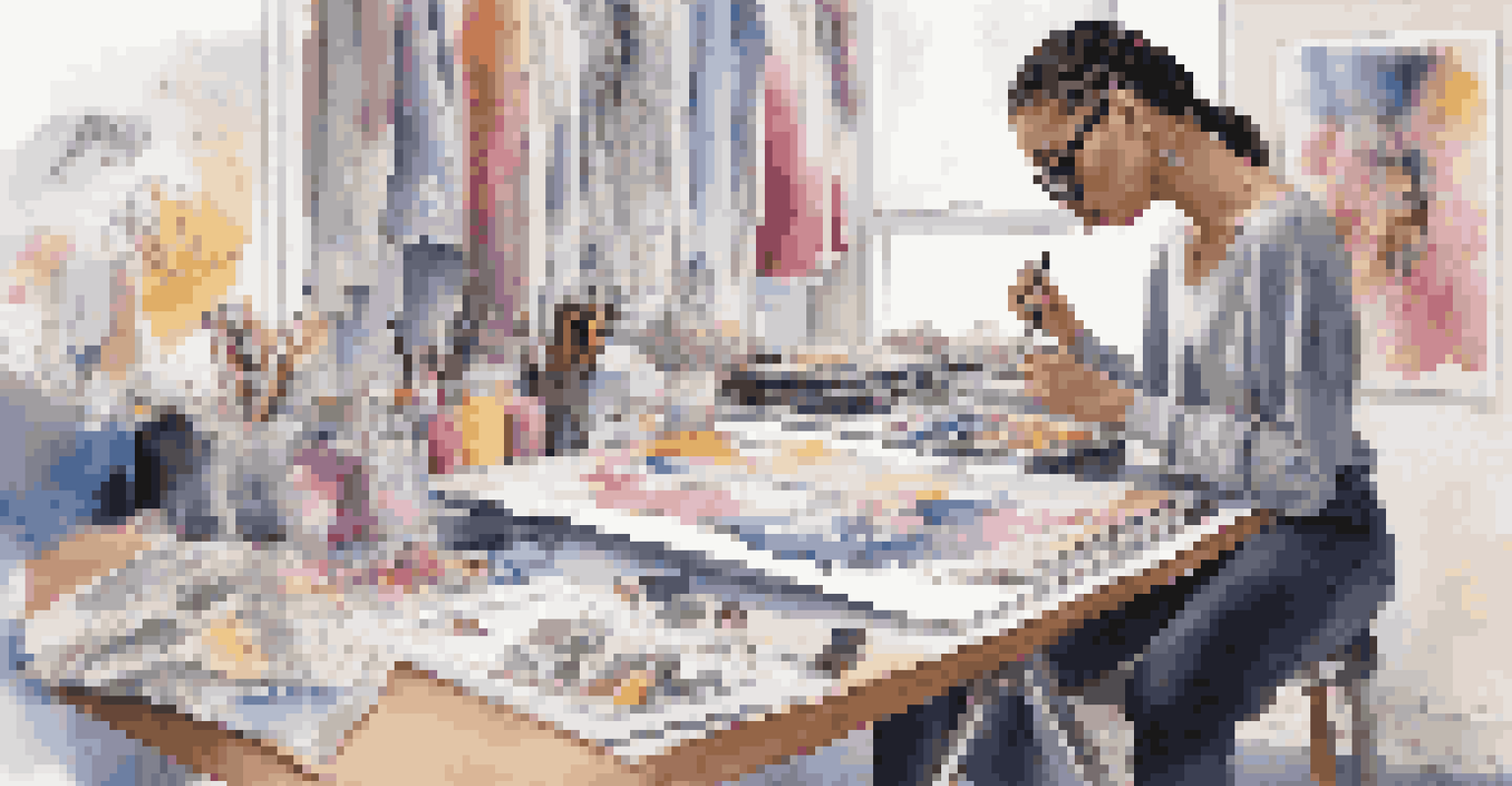Gender Representation in Dance Fashion: An Analysis

The Evolution of Dance Fashion Through the Ages
Dance fashion has undergone significant transformations over the years, reflecting broader societal changes. From the elegant tutus of ballet to the free-form styles of contemporary dance, each era has brought its unique flair. This evolution often mirrors the shifting perspectives on gender roles and representation in society.
Dance is the hidden language of the soul.
In earlier years, dance attire was often gender-specific, with rigid expectations for both men and women. For instance, men typically wore tights and fitted shirts, while women donned skirts and bodices. However, as dance became more expressive and inclusive, these strict guidelines began to blur, allowing for a more fluid interpretation of gender.
Today, we see a rich tapestry of styles that challenge traditional norms. Dancers can choose outfits that resonate with their identity, moving beyond the binary to embrace a spectrum of gender expressions.
Breaking Stereotypes: Gender Fluidity in Dance Attire
One of the most exciting developments in dance fashion is the rise of gender fluidity. This shift allows dancers to express themselves authentically, regardless of the conventional labels that society often imposes. For example, male dancers now embrace skirts and flowing fabrics that were once deemed exclusively feminine.

This trend is not just about clothing; it represents a broader cultural movement toward inclusivity and acceptance. Dance companies and choreographers are increasingly highlighting diverse voices, showcasing that talent knows no gender boundaries. This evolution is crucial in inspiring the next generation of dancers to feel empowered in their choices.
Dance Fashion Reflects Societal Change
The evolution of dance attire mirrors shifts in gender roles and societal norms, moving from rigid expectations to more fluid expressions.
Moreover, many designers are creating collections that intentionally reflect this fluidity. By prioritizing comfort and personal expression over traditional gender norms, they contribute to a more inclusive environment within the dance community.
The Role of Influencers in Dance Fashion Trends
Social media has played a transformative role in shaping dance fashion trends, particularly through influencers. These individuals often set the tone for what is considered stylish, blending personal style with dance culture. As they showcase their attire online, they inspire countless followers to experiment with their looks.
Fashion is the armor to survive the reality of everyday life.
Influencers who advocate for gender equality and representation have also made a significant impact. Their platforms allow them to challenge outdated norms and promote diverse styles that resonate with various identities. This visibility encourages discussions around gender representation in dance and beyond.
Additionally, this digital landscape fosters a sense of community among dancers. Individuals can share their outfits, styles, and inspirations, creating a vibrant space where everyone feels seen and heard, further promoting inclusivity.
Cultural Influences on Dance Fashion Choices
Cultural backgrounds significantly influence dance fashion, often intertwining with gender representation. Different styles of dance, such as hip-hop, ballet, or traditional folk dances, come with unique attire that reflects cultural heritage. This diversity enriches the dance fashion landscape, allowing for varied expressions of identity.
In many cultures, traditional attire carries deep meaning and significance, influencing how dancers choose to present themselves. For example, Bollywood dance incorporates vibrant, intricately designed garments that highlight femininity while showcasing strength. Such cultural representations challenge Western ideals of gender and beauty.
Inclusivity Drives Gender Fluidity
The rise of gender fluidity in dance fashion encourages authentic self-expression, challenging traditional gender norms.
As global dance influences merge, they create a rich dialogue about gender representation. Dancers can draw from various traditions, allowing them to craft a personal style that honors their heritage while embracing modern interpretations.
The Impact of Gender Representation on Audience Perception
Audience perception of dance is heavily influenced by how gender is represented in fashion. When performers step onto the stage, their attire often communicates messages about power, identity, and creativity. A dancer's choice of clothing can challenge stereotypes and reshape how audiences view gender roles.
For instance, a male dancer in a traditionally feminine outfit can provoke thought and discussion, pushing the boundaries of what is accepted. This can lead to a broader understanding of gender fluidity and encourage audiences to reflect on their biases.
Moreover, when diverse gender representations are showcased, it empowers audience members to embrace their own identities. This ripple effect can inspire individuals to celebrate authenticity, fostering a more inclusive environment both in dance and society at large.
Fashion Designers Leading the Charge for Inclusivity
Many fashion designers are at the forefront of promoting inclusivity in dance attire. They recognize the need for clothing that caters to a diverse range of body types and gender identities. By creating versatile pieces that can be worn by anyone, these designers are redefining what dance fashion looks like.
For instance, brands that focus on unisex designs are gaining popularity. They offer styles that allow dancers to express themselves freely, without the constraints of traditional gendered clothing. This shift not only enhances comfort but also encourages personal expression in performance.
Cultural Influences Shape Fashion Choices
Cultural backgrounds play a significant role in dance fashion, allowing for diverse expressions of identity and challenging Western ideals.
Furthermore, these designers often collaborate with dancers and choreographers to ensure their creations meet the needs of the community. This collaborative spirit fosters innovation and keeps dance fashion dynamic and relevant.
The Future of Gender Representation in Dance Fashion
Looking ahead, the future of gender representation in dance fashion appears promising. As society continues to embrace diversity and challenge norms, we can expect to see even more innovative designs that reflect this evolution. Dancers will likely have more opportunities to dress in ways that resonate with their true selves.
Education plays a crucial role in this transformation. By teaching young dancers about the importance of self-expression and inclusivity, we can cultivate a generation that values authenticity. This awareness will further push the boundaries of what is considered acceptable in dance fashion.

Ultimately, as the dance community continues to grow and evolve, it will be exciting to witness how fashion adapts. With the blending of cultures, ideas, and identities, the future of dance fashion is bound to be vibrant and inclusive.